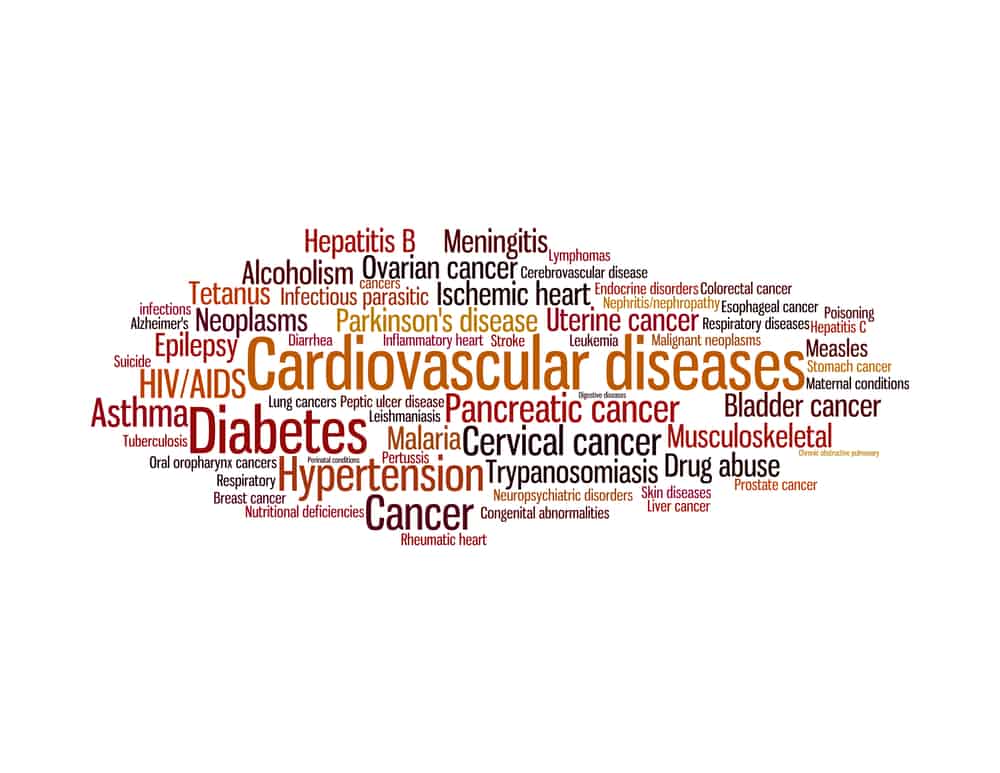Diabetes is killing us. Caused by overweight, poor diets, lack of exercise and family history, diabetes is the 7th leading cause of death in the United States and one of the most expensive chronic diseases to treat, costing twice as much nationally as it does to treat cancer. Efforts to address this epidemic at the individual level aren’t making a significant dent. Stemming the tide of diabetes is going to take a broad-based population health approach super-fueled by technology. Perhaps diabetes is the theater in which technology can activate the potential and power of a population health approach to chronic disease management. Given the incidence and mortality rate of the disease, it behooves us to try. The bottom line is this: technology fights diabetes and it’s time we harnessed it.

The Situation
30.3 million Americans have diabetes and 7.2 million of them are undiagnosed. Twelve million (25.5%) Americans over the age of 65 and approximately 193,000 under the age of 20 (0.24% of that population) have diabetes. Another 84.1 million adult Americans have prediabetes.
The disease doesn’t discriminate. It affects all races and ethnicities.
American Indians/Alaskan Natives have the highest rate in the U.S. at 15.1 percent
- Non-Hispanic blacks: 12.7 percent
- Hispanics: 12.1 percent
- Within that group, at highest risk are those of Mexican Americans descent: 13.8 percent
- Asian Americans: 8 percent
- Within that group, at highest risk are those of Filipino descent: 8.9 percent
- Non-Hispanic whites: 7.4 percent
Diabetes doesn’t care about geography either. A majority of the 50 states in the US have rates that range between 8 and 12 percent. The 10 states with the highest type 2 diabetes rates are in the South. West Virginia leads the list with an adult diabetes rate of 15.2 percent. Kentucky, Tennessee, South Carolina, Alabama, Mississippi, Louisiana, Arkansas, and Oklahoma round out the top ten with rates between 12 and 15 percent.
As a thumbnail sketch, this illustrates exactly why only a population health approach is going to make a dent in the diabetes epidemic. Granted, individual self-management is a key part of the solution as well. However, unless the social determinants of health are addressed to support changes in behavior, the diabetes train is going to continue to roar along the tracks.
Diabetes is a runaway train

It’s not for a lack of trying on the part of healthcare providers, but a patient-centered approach based on individual treatments, physician appointments, diabetes educators, medication, and blood sugar monitoring are not decreasing incidence rates in a meaningful way. So, what is happening to fuel the epidemic? The answer is all the factors that impact a patient’s life outside the doctor’s office – in other words – population health. Diabetes is a chronic disease that brings into stark relief, the detrimental impact of all the elements comprising population health.
Not to discount efforts being made in the US to address the diabetes epidemic, and we will look at some, but our neighbors to the North are pushing hard to make population health a central force in the battle against diabetes. Research published on behalf of the Public Health Agency of Canada states that a population health approach is the best way to address “environmental determinants, along with individual biological and behavioral determinants and the role they play in the development and prevention of physical inactivity, unhealthy eating and obesity”.
The agency underscores the fact that treating the individual isn’t necessarily the key to success when it comes to diabetes saying, “Interventions focused on the individual are unlikely to succeed if the environmental conditions in which they are delivered are not supportive.”
What is population health?
There are many definitions, but the bottom line is this; population health is an approach to healthcare management that considers the environment in which individual lives and works. It considers the impact of these factors on the patient, and his or her ability to access, and comply with, care. Things like income, education, social and familial support, crime rates in the neighborhood, transportation, food security, cultural beliefs, and language impact health. So do the types of food a person can afford to eat and whether there is access to green spaces for safe physical activity. All of these factors directly impact the things that impact diabetes, namely, physical health, obesity, and physical activity.
As the Canadian Public Health Agency abstract stated, “A population health framework should incorporate determinants at all levels including the macro (international, national), the proximate (community, home/work/school), and the micro or individual level. If obesity is to cease as a population-level health problem, it requires a population health approach. Social inequalities and environmental barriers are often ignored in obesity strategies and result in the growth of disparities and inequities in health.”
Population health takes a village

A population health approach to better patient health requires a village of healthcare providers and community resources. Collaboration between providers, public and community health resources becomes the net that can capture patients, enveloping them in the support they need to live healthier lives and avoid chronic disease.
Population health is quickly becoming a mandate if we are to reduce the incidence of chronic disease that is not only costing the US healthcare system billions of dollars but killing our citizens as well. The National Center for Chronic Disease Prevention and Health Promotion says that one in every two adults in the US has a chronic disease and one in four has two or more.
West Virginia knows this. With the highest obesity rates in the nation, West Virginia has launched a comprehensive population health approach to address the problem. The Flagship Objective for the Nutrition and Overweight West Virginia Healthy People 2010 Objectives believes that “only a comprehensive effort that fosters community health programs will begin to make an impact and lead to widespread support for the nutrition and exercise programs needed to combat chronic disease.” Consequently, the program fosters collaboration among agencies to “assess resource allocation, build coalitions, and develop grassroots programs that address the factors that cause obesity. “
The Flagship Objective has created a Best Practices Model for Addressing Chronic Disease for practices and programs that focus on the elimination of healthcare disparities. Each program must be:
- Affordable and sustainable
- Science-based and effective
- Replicable and relatively easy to implement
- Well-defined with clear goals and measurable objectives
- Valued by stakeholders
- Comprehensive and inclusive
- Acceptable to the target population
- Accessible
- Focus on growing communities and building social capital
Those may seem like simple steps, but they are the core steps to building a playbook that integrates a population health approach into the delivery of everyday health care.

The Centers for Disease Control and Prevention believes that a population health approach not only improves health but reduces health disparities, especially when it begins with the youngest of children attending Head Start programs. They highlight one program created by the University of California, Los Angeles/Johnson & Johnson Health Care Institute (HCI). Its goal is to address environmental deficiencies and improve health literacy among Head Start families to expand access to healthy foods and increase physical activity. The program recognizes that “this problem cannot be solved by better and more accessible medical care alone and that has led to the resurgence of interest in population health and its underlying determinants: behaviors and social and environmental conditions.” The program:
- Provides healthier food and more physical activity
- Visits community grocers to learn how to buy and prepare healthy, affordable foods
- Works with grocers to sell healthier foods
In the past 18 years, it has reached more than 120,000 “vulnerable families” in the US.
The results of the program’s outreach, documented among more than 9,000 families at 55 sites are impressive:
- Emergency department visits declined by 58%
- School days missed were reduced by 29% which resulted in enhanced school readiness
- Parents’ work-loss days decreased by 42%, critical for low-wage workers
The CDC says these results bode well for the future; “Over the longer term, life-long improvements in health behaviors, higher graduation rates, and better job opportunities in healthier, more supportive communities should pay off in reduced rates of major chronic diseases as well. Partially in response to these successes.”
Winning the diabetes battle requires technology

Let’s face it, we can’t do this without technology. Doctors need to stay in touch with patients when they aren’t face-to-face in the office. Physician workflow must be streamlined, and data analyzed. Education and support must be delivered continually if patients are to make the lifestyle adjustments necessary to manage their diabetes. Self- management tools and home glucose monitoring must be technology based if physicians are to receive the data. Technology fights diabetes and without it, the battle won’t gain a foothold.
What can technology accomplish? The list is long, but to begin with, technology closes gaps. Changing behaviors requires communication with patients outside the confines of the doctor’s office. Physicians must be able to stay in touch with their patients easily. Technology makes increased patient communication possible through:
- Electronic reminders to patients via email and/or text
- Population health software that assesses the patient population for vaccines
- Remote monitoring for things like blood sugar levels for diabetes patients
- Monitoring data to ensure diabetic patients are getting annual checks for eyes, feet etc.
A population health approach requires the deployment of every form of technology from the high tech to the low tech, from the desktop to the street. Here are some examples of why we need technology to improve the delivery of healthcare:
Cardinal Health in Dublin, Ohio is taking technology to the streets. They think they’ve found a way to lower healthcare costs through what they call “community paramedicine”. EMTs deliver emergency, primary and follow-up care in the community itself. It allows more care to be delivered and tailored to a community’s unique needs – including managing patient populations with chronic diseases like diabetes.

Patient Centered Primary Care Collaborative has a vision of “medical neighborhoods”. in this scenario, technology fights diabetes, along with other chronic diseases. They are created through technology services that help providers integrate and coordinate with schools, employers, public health agencies, faith-based organizations, and others. A “Top Ten List” of health IT-based population health management tools helps the collaborative to achieve their goals including:
- Electronic Health Records (EHRs)
- Patient registries
- Health information exchange
- Risk stratification
- Automated outreach
- Referral tracking
- Patient portals
- Telehealth / telemedicine
- Remote patient monitoring
- Advanced population analytics
Technology improves patient outcomes
The effective treatment of diabetes relies as much on successful patient education as it does on insulin and other medications. One of the obstacles to successful patient education is the need for patients to attend classes with diabetes educators, or regular physician appointments. If they can’t attend or miss an appointment, they miss the education provided by the doctor. However, technology can reach patients anytime, anywhere. Patients can receive ongoing support and education via text and email. Studies are showing that technology can grease the education wheels and that in turn, improves patient outcomes.
A review published in the World Journal of Diabetes found that “technological interventions had positive impacts on diabetes outcomes including improvements in hemoglobin A1C levels, diabetes self-management behaviors, and diabetes self-efficacy.” The use of technology supported a wide range of activities and behaviors that improved diabetes management including blood glucose monitoring, exercising, taking medication, healthy eating and monitoring for complications.
Another study found that “technology-enabled diabetes self-management solutions significantly improve A1c.” The study found that when technology allowed patient self-management to be part of a feedback loop with their health care team, it facilitated individualized feedback which led to improved outcomes. It also gave providers the opportunity to analyze patient-generated health data and tailor education to each patient.
Technology can improve patient education because it allows patients to see, first hand, what diabetes does to their body. A study that looked into the level of support needed by diabetes patients to achieve wellness and reduce complications found “technologies enabled the users to get an in-depth sense of how their body reacted to both lifestyle and medication factors—something that was much more difficult with the use of traditional standardized information alone.”
Technology helps doctors as well. As one study said, “incorporating web-based patient self-management and support into traditional treatment methods, one clinician can effectively support many patients – one patient at a time”.
The high cost of the high incidence of Diabetes

Why is technology important to battle diabetes? Because we must use every tool available to fight one of the most expensive diseases in America. The American Diabetes Association estimates medical expenditures for those with diabetes are 2.3 times higher than for those without the disease. In fact, it is now one of the most expensive chronic diseases in the nation, comprising more than 20 percent of healthcare expenditures in the United States. Treating diabetes costs more than treating illness related to smoking, alcohol, Alzheimer’s disease, and cancer. Here’s a brief look at the numbers:
The total estimated cost of diabetes annually: $327 billion
- $237 billion in direct medical costs
- $90 billion in reduced productivity
- Average annual medical expenses for those with diagnosed diabetes: $16,750 per year
- $9,600 attributed to diabetes
As incidence rates rise, so does the cost of treating diabetes. In fact, the cost has increased 26 percent in just five years, (2012 to 2017). If an average rent of $1500 a month increased by 26 percent, it would suddenly cost $1,890. None of us want to pay 29 percent increases in our daily lives, it’s time to address them in healthcare.

Another way to look at the high cost of treating diabetes is to compare the $327 billion annual price tag to treatment costs for other chronic diseases in the U.S.
- Smoking-related healthcare costs the US more than $300 billion a year.
- Alzheimer’s disease and other dementias cost a total of $259 billion for health care, long-term care, and hospice:
- Alcohol-related illnesses cost the US $223.5 billion a year.
- Cancer-related healthcare costs are estimated to be $157 billion.
It’s also expensive to treat two of the major causes of diabetes – obesity and a lack of exercise. Recent reports show they cost the US healthcare system billions of dollars:
- $147 billion for healthcare related to obesity
- Approximately $117 billion for healthcare related to inadequate physical activity.
Overall, healthcare costs for obese patients were $1,429 higher than patients with normal weight.
One step at a time

Fueling population health with technology for the battle against diabetes is essential. The first step is reaching out to provider partners and community resources and asking the question, “What can we achieve if we work together to support our patients’ success?”
The next step is to adopt the technology we need to reach patients outside of the physician’s office and establish a constant flow of actionable information and data. Technology fights diabetes.
The adage of “A journey of a thousand miles begins with a single step” applies here. It becomes a long overdue acknowledgment that we can’t do everything at once. Adopting a population health approach to healthcare does not require billions of dollars, groundbreaking policy changes, or widespread systemic integration – at least not at the outset.
The journey begins with two essential steps:
One: Leave behind the traditional siloed mentality of healthcare delivery
Two: Return to what comes naturally – seeking all sources necessary to improve a patient’s care
Once those steps have been completed and technology is in hand, we can get to the real work of fighting the diabetes epidemic, addressing the elements of population health, and improving the lives and health of our citizens.
from Health Care Technology – ReferralMD https://ift.tt/2UaXjQd
via IFTTT


This article is really contains lot more information about This Topic. We have read your all the information some points write my paper for me are also good and some usually are awesome. Great post I would like to thank you for the efforts you have made in writing this interesting and knowledgeable article.
ReplyDelete